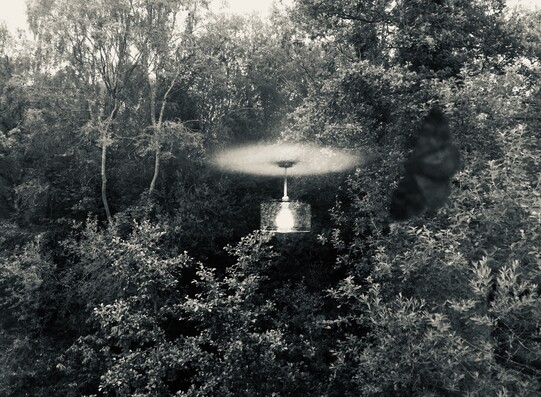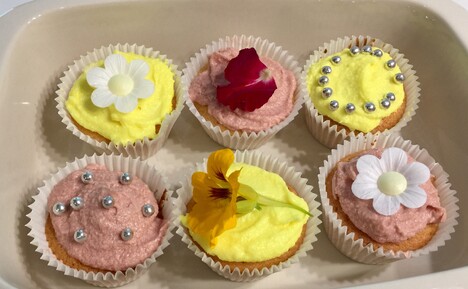A photo taken during lockdown: can you spot what is happening?
More with less?
When I worked in the Civil Service in the first decade of this Century, we were often told we needed to ‘do more with less’. The phrase was often used literally as well as (more often) ironically.
Fast was good. Rush was often the norm. Reflection and review were nice ideas but seemed to have little place in the reality of our department’s working methods. The work was responsive to international events so this was partly understandable. But the high-octane way of working could become addictive. It could sometimes feel a little like taking part in a race without a clear finish line.
Since I left in 2011, I have worked at extricating myself from the mindset I had learned to adopt, and which had become ‘natural’. It had been about speed, multi-tasking and perfectionism. I sometimes describe myself as a ‘recovering perfectionist’: the instinct to ‘get it right’ at almost any cost was so powerful when those in power determined and praised ‘right’ often (not always) above ‘creative’ or ‘good enough’. When I had time (ha!) I would occasionally ponder what 'right' was anyway, and who determined what it was. It took even longer for me to realise that a whole series of physical symptoms I regularly experienced – back ache, headaches, digestive problems and more - were the result of this relentless way of working – too much cortisol had been surging round me causing havoc. Things needed to change.
Forced to pause
Writing this in late July 2020 after almost 4 months of lockdown and semi-lockdown in the UK, there has been no alternative to major change. We were suddenly told life would be different. And we had to deal with it.
For many of those on the frontline, whose jobs are keeping us safe, alive and fed, the pace of work became even more intensive, often involving punishing hours and shifts. Our debt to them is incalculable and some have paid the very highest price. For those of us who have not been key workers, being forced to stay at home and for much of the period, never go beyond our neighbourhood, shrank our lives and it forced us to slow down.
I remember the evening of Friday 20 March as the new regime was announced. I felt a mild sense of panic. Like many people, I had a created a routine for myself which helped keep me going. I travelled on public transport almost every day, worked in different cities, attended gym classes several evenings a week, got quite tired, but kept going. In 24 hours most of those actitivies were about to shut down.The rhythm and routine of life which was created by going places, would not be there any more.
I think the earlier decade of fast and furious had left a deep psychological imprint on me. Becoming self-employed, and slowly creating a more balanced lifestyle which was much more human-friendly had helped. But the key turn of events was the lockdown. It forced a serious re-think and taking a long hard look at existence and what helped me feel ok. This is what the American coach, Shirzad Chamine would call one of the ‘gifts’ of this difficult time.
A friend described the worst bits of lockdown as having a ‘terrible flatness’. Life, feelings, energy levels had all become squashed and less defined. (Yes, it was Tuesday – but what was the point of Tuesday?). This description felt apt, particularly when I felt my personal stream of sadness welling up at unexpected moments.
I have learned to ‘go with’ these bouts of mild to moderate depression, to get out for a walk and just try to switch my thoughts off. This is not easy. I overthink instinctively and it is tempting to try to figure out a trigger for these mood drops and a corresponding way to ‘fix’ it. Grey, wet days with nothing scheduled definitely felt riskier, but it was more than that. It was like having to set a path through a place where heavy fog only allowed us to see for a short distance ahead. Our horizons now have to be closer and we cannot plan with confidence a long way ahead.
I regularly work with a people who live with significant mental health issues. I am familiar with the excruciating pain of deciding what to do on a day when you don’t want to do anything, and just want to hide. Writing down in order a list of basic functional tasks (shower, dress, take bins out) as a way of breaking the indecision and actually doing something, is one way to nibble at the edges of the black mood. And our critical inner voice will often look at this process and mock the fact that you have to tell yourself what to do. It’s tempting to give in to ‘second layer’ mockery, but important to resist it.
I found myself utterly absorbed one empty weekend day by the takeover of a nasturtium plant and its flowers by a determined army of black flies. I became fascinated by how to launch an effective assault (hands only, no chemicals allowed) and spent almost an hour on this. The squishy, fiddly, annoying nature of the task was what actually helped. I would guess that around 50% of the black fly army remained. But it didn’t matter. I had done something. Choosing to produce something visually pleasing, involving more detailed and elaborate work, such as recent cakes for friends, gave the same positive distraction.
What is the connection between these cakes and the fly-fighting story?
Give yourself permission
I developed a set of 'permissions' for myself:
- It is ok to feel not ok.
- It is ok to not be able to fix how I feel.
- And it is ok to do whatever helps feel ok.
Each week of this strangest of summers, when I checked in with a friend, to set weekly small goals, I became aware hat the main ‘goal’ for me was simply to keep going. From this emerged a surprise. The goal now, was the reverse of the adage from 19 years ago: I needed to not do ‘more with less’ but actually do less but with more (energy and time).
It is not just about ‘slowing down’, but noticing the full sensory detail of what you are doing – and appreciating it. The process of living and maintaining ourselves occupies so much of life that if we can learn to notice it fully and enjoy it more, we are going to feel a bit better.
If you have read to the end of this leisurely blog (deliberately not planned as a 30-second read) well done. And did you spot what was happening in the photo at the top? It is one photo taken indoors - so how did a giant moth and an apparent UFO get there?* And have you spotted the subtle link between the photos of the cakes and the fly-fighting story?** Noticing these details and taking time, if we have it, to ponder them, can calm your mind and make you more curious and productive. If you too decide to do less with more, I hope it brings you serenity and happiness.
‘The more you are focused on the past and the future, the more you miss the now – the most precious thing there is’.
- Eckhart Tolle
‘Be who you are and say how you feel, because those who mind don’t matter, and those who matter don’t mind.’
- Dr. Seuss.
**The photo was taken in the late evening looking out of the window. The 'UFO' is the reflection of the pendant lampshade in the window. The moth was on the outside of the window.
**The yellow flower on the cake is a nasturtium (they are edible) - the triumphant result of conquering the black flies and healthy new flowers appearing*

